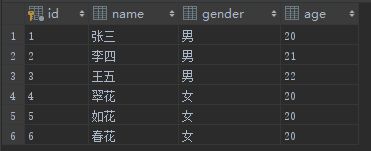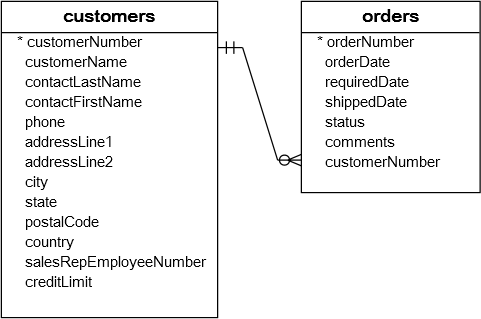Rows and from the Ttable match with rows A and B from the Ttable respectively. In the previous tutorial, you learned about the inner join that returns rows if there is, at least, one row in both tables that matches the join condition. Die Zusammengehörigkeit der Daten ergibt sich aus dem logischen Datenbankdesign , die meist in Form eines Entity-Relationship-Modells dokumentiert ist.
Left join returns all values from the right table, and only matching values from the left table. LEFT JOIN and LEFT OUTER JOIN are the same. ID and NAME columns are from the right side table, so are returned. Score is from the left table, and is returne as this value relates to Name Flow.
The result is NULL in the right side when no matching will take place. Left join tries to add NULL-valued parts for right table when corresponding record(s) not exists. SQL join: where clause vs. WHERE ejects all of them.
When a row in the left table has no matching rows in the right table, the associated result set row contains null values for all select list columns coming from the right table. Now, we will demonstrate how these work. Solved: I am new to SAS and have this basic problem. Suppose that you want to join two tables tand t2. The easiest and most intuitive way to explain the difference between these four types is by using a Venn diagram, which shows all possible logical relations between data sets.
In time this article is written, those Hibernate problems have no simple solution. To overcome JOIN ON limitation, one can use sub-selects, similar to SQL. The overhea caused by that kind of additional queries seems to be limited. Art von Join ausgeführt wird: innerer Join , äußerer Join oder Cross Join.

Prädikat, das für jedes verknüpfte Zeilenpaar ausgewertet werden soll. Below are the two tables contain the column with one column matching rows. The first table is Purchaser table and second is the Seller table. OR it will join the tables first, then filter on the result of join.
Learn how to use left and right joins using the plus sign in an Oracle database. Oracle allows queries to be generated that JOIN rows from two or more tables. On the right table, the matching data is returned in addition to NULL values where a matching record exists in the left table, but not in the right table. RIGHT JOIN and RIGHT OUTER JOIN are the same. Cela permet de lister tous les résultats de la table de gauche ( left = gauche) même s’il n’y a pas de correspondance dans la deuxième tables.

If you dont know the joins its really very difficult how to join tables in SQL. What is left outer join in Oracle? Der entscheidende Unterschied zwischen Where und einem Join ist dennoch die Performance, die aber erst bei größeren Abfragen zum tragen kommt.
Mit einem Join kann man eine Auswahl verfeinern. Left Join nur die Daten der linken Tabelle im Join ausgeben. Just a quick reminder: an anti- join is an operation that returns all records from one table which share a value of a certain column with no records from another table. Their Math grade will be their Math grade or else NULL. In effect, the first query behaves the same as an inner join.
For this, We are going to use the tables that we have shown above. In the example A, you get two different depending on when you do the filtering. And therefore, the left join actually acts like an inner join. These method differ in how they handle NULL values in t_right.
This tutorial focuses on the inner join. The inner join clause links two (or more) tables by a relationship between two columns. Whenever you use the inner join clause, you normally think about the intersection.

Left outer joins include all of the records from the first ( left ) of two tables, even if there are no matching values for records in the second (right) table. INNER JOIN Ware_Bestand wb ON w.
Keine Kommentare:
Kommentar veröffentlichen
Hinweis: Nur ein Mitglied dieses Blogs kann Kommentare posten.